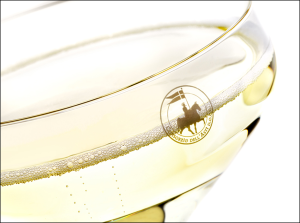And then there were 77: with the recent registration and publication of the Canelli DOCG, Italy now has 77 wines that can claim the Denominazione di Origine Controllata e Garantita (DOCG) title.
The Canelli DOCG is approved for sweet, frizzante wines produced from 100% Moscato Bianco (Muscat Blanc à Petits Grains) grapes. This style of wine—produced in the larger Asti DOCG where it is known as Moscato d’Asti—is already well-known and widely popular.
The Canelli DOCG—formerly a sub-zone of the larger Asti DOCG—is the 19th DOCG to be approved in Piedmont, cementing the area’s claim to the most DOCGs of any region of Italy. (The number two place goes to Veneto, currently home to 14 DOCGs.)
The area covered by the Canelli DOCG covers 18 communes within the provinces of Asti and Cuneo; this makes the region quite a bit smaller than the larger, surrounding Asti DOCG (which is spread over the area now covered by the Canelli DOCG as well as an additional 5 communes). There are currently just over 40 estates eligible to produce Canelli DOCG, and it is estimated that annual production will—for the next few years—be just over 500,000 bottles. It is, however, anticipated that the establishment of the new Canelli DOCG will drive some growth in the wine’s popularity and subsequent production.
- In accordance with the regulations of the Canelli DOCG, hand harvesting is mandatory, yields are strict, and the vineyards must be planted on the area’s rolling hills at elevations between 540 feet/165 m and 1,640 feet/500 m. Other regulations governing the wines of the Canelli DOCG include the following:
- 100% Moscato Bianco (Muscat Blanc à Petits Grains) grapes
- Frizzante (lightly sparkling) with a maximum of 2.5 atmospheres of pressure
- Minimum alcohol level: 4.5% by volume; maximum 6.5%
Residual sugar is not specifically mandated; however, there are standards for minimum potential alcohol at harvest (11.0%) and maximum abv in the finished product. As a result, the average wine will contain approximately 8% residual sugar.
Sounds delicious…welcome to the world, Canelli DOCG!
References/for more information:
Post authored by Jane A. Nickles…your blog administrator: jnickles@societyofwineeducators.org
